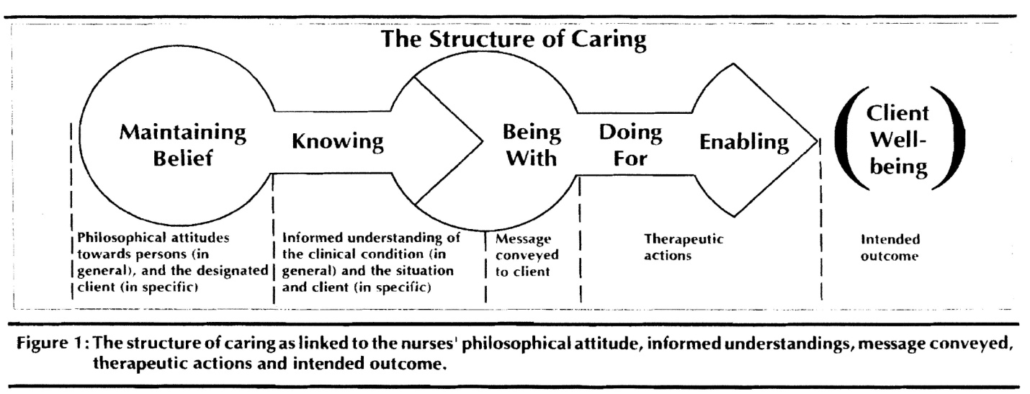This article applies Swanson’s Middle Range Caring Theory to establish the ground for helping women who suffer from early miscarriage and caring for those who experience late missed miscarriage in order to improve their well-being.
Through tape recording, Jansson interviews 25 women who had experienced miscarriage and thirteen midwives who handled women who had earlier been diagnosed with a missed miscarriage. The author used the theory to transcribe the interviews verbatim and interpreted them deductively.
The components of caring in Swansons Middle Range Caring Theory include: maintaining belief, knowing, being with, doing for and enabling (Swanson, 1991).

Maintaining Belief- Swansons Middle Range Caring Theory
Based on these five components, the author finds out that in maintaining belief, women can withstand the experience and consider having a meaningful future. Through the caregivers’ encouragement and the couple’s support, there is a positive meaning to a challenging experience in life.
Knowledge
On knowledge, caregivers need to have a broad background in medicine and psychology as well as details of the cause of the problem at hand. A knowing caregiver has the necessary skills of attending to individual women based on their cases and needs. However, women have distinct states of distress after a difficult experience (Meaney et al. 2017). They, therefore, need comfort for a while. Hence, the sense of being with.
Doing
Other than giving counselling to put away disturbing memories and working through the predicament, women who have suffered miscarriage need follow-up examinations in the aspect of doing for (Magnus et al. 2019). Eventually, caregivers need to develop alternative courses of action, have a clear thought of things, and listen as they also support the women who have suffered a miscarriage. By so doing, the author acknowledges that the caregiver will enable the woman to focus on understanding of one’s body and spirit.

Enabling
The author presents that the theory applies to the caregiver to be emotionally present, give the women support with respect for their dignity, be competent, and meet the needs of individual women.
This article gives valuable background information on the study and a detailed discussion of the findings and results, which gives a better understanding of the theory application.
References
Jansson, C., & Adolfsson, A. (2011). Application of “Swanson’s middle range caring theory” in Sweden after miscarriage.
Magnus, M. C., Wilcox, A. J., Morken, N. H., Weinberg, C. R., & Håberg, S. E. (2019). Role of maternal age and pregnancy history in the risk of miscarriage: a prospective register-based study. BMJ, 364.
Meaney, S., Corcoran, P., Spillane, N., & O’Donoghue, K. (2017). Experience of miscarriage: an interpretative phenomenological analysis. BMJ Open, 7(3), e011382.
Swanson, K. M. (1991). Empirical development of a middle-range theory of caring. Nursing Research, 40(3), 161-166.
